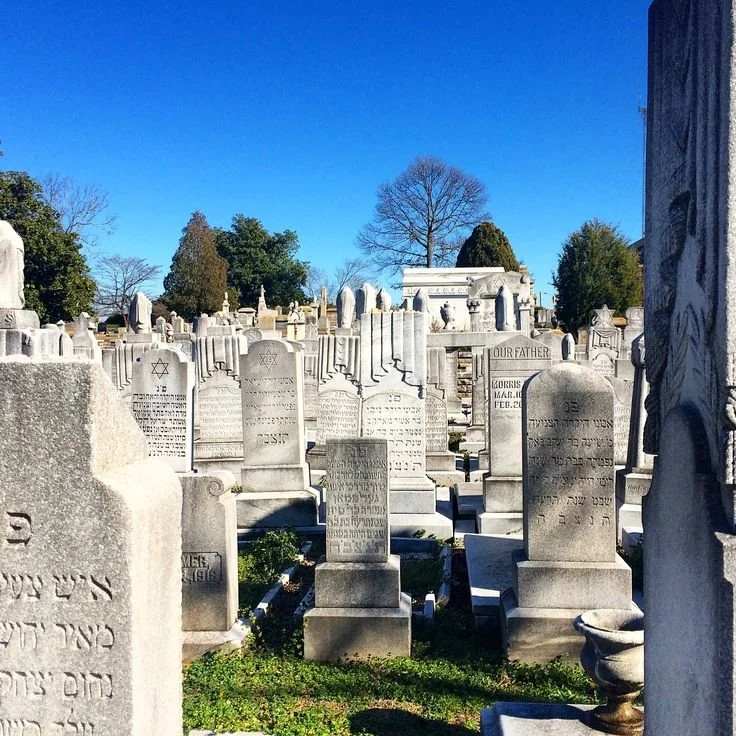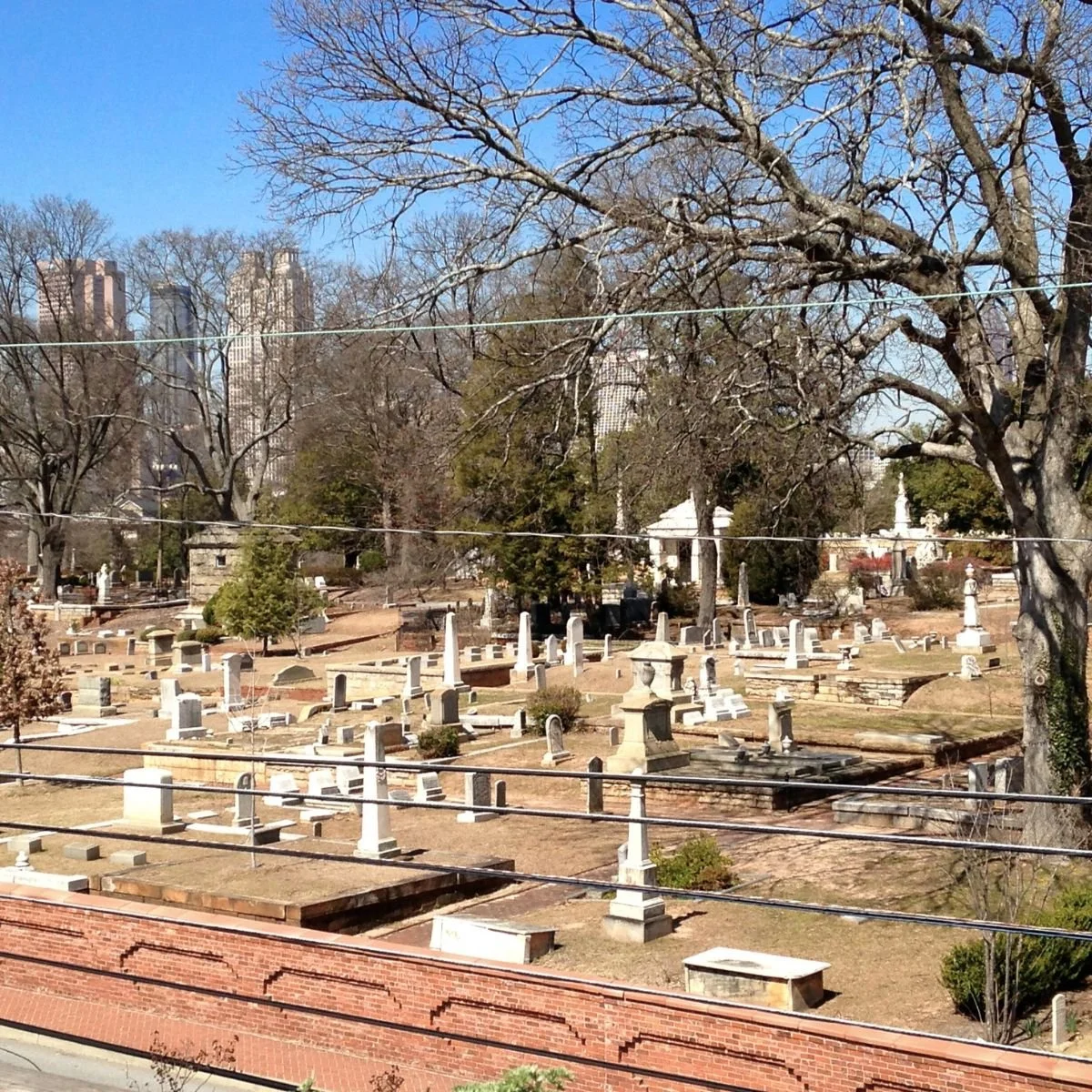The Living And The Dead
On a warm February afternoon, while much of the northeast was digging out from a major snowstorm, the family and I went to visit one of our favorite local parks — Oakland Cemetery. This trip was prompted by a glorious day, with temperatures in the upper 60s and the posting of a game called Cluetown, which showed up in my Facebook feed. Cluetown is a scavenger hunt puzzle game where you solve the riddles to move to the next point on the map. It was a nice diversion.
For those of you who don’t know, Oakland Cemetery is Atlanta’s oldest Park. Surrounded by former factories converted into restaurants and loft space and bordering the revitalized neighborhoods of Grant Park and Cabbagetown, it is located less than 1 mile from the tall towers of downtown. It is perhaps Atlanta’s greatest living history park and home to the final resting place of 70.000 souls. Thousands of people drive by its red brick enclosure daily, not fully realizing the range of activity that goes on there. Oakland is anything but a quiet resting ground.
Founded in 1850 as Atlanta Cemetery on a 6 acre plot at the Southwest corner, by 1872 it had expanded to the current 48 acres and was renamed Oakland in honor of the many oak trees in the area. While the last plots were sold in the 1880s, burials are still regularly performed. Because of this, an incredible history of the last 150 years of funerary monuments and practices is on display, ranging from simple stones to elaborate Gothic mausoleums, including Tiffany Stained glass windows.
Oakland is a living example of the Victorian garden cemetery and is laid out as a landscaped park. As such, plots were prized for their location, and obelisks, mausoleums, and monuments were designed to take advantage of their location. In keeping with Victorian era customs, the cemetery also hosted family picnics and Sunday visits to Grandma, during which the families would maintain their plots. Each October, these practices are remembered in the celebrated “Sunday in the Park,” which benefits the Historic Oakland Foundation. Volunteers dress in period costume, vendors and musicians set up their booths, and the city shows up for a great outdoor event. In addition to Sunday in the Park, there are the June “Tunes from the Tombs” and sell out nighttime Halloween Tours. There are also weekly guided tours of the grounds. Being a public park, there are also daily dog walkers, joggers, and bicyclists who take advantage of the winding paths and picturesque grounds. It also still hosts burials on a regular basis. It has also hosted weddings.
The city of the living rises behind and merges with the city of the dead. The tops of the Georgia Pacific Building, 191 Peachtree and the Westin Peachtree Plaza blend seamlessly into the tombscape.
Founded in 1976, the same year the Cemetery was placed on the National Register of Historic Places, The Historic Oakland Foundation has been instrumental in saving and preserving the park. It has worked with the city to repair and replace portions of the brick enclosing wall and the adjacent sidewalk. It has recently celebrated the completion of the restoration of the damage caused by a tornado passing through 5 years ago that uprooted 100 old trees and toppled over 300 monuments.
Oakland is steeped in Atlanta history. It includes the best know names in the city’s history including mayors, governors, business owners. It includes the grave of Martha Lumpkin that Atlanta was once named for. It also includes the graves of author Margaret Mitchell (Gone with the Wind) and golf great Bobby Jones. It’s very layout serves to remind us of the segregated society that was the past. There is the Jewish section, a section of contiguous plots purchased by the city’s oldest temples for the use of its members. There is a slave section (relocated once as the cemetery expanded) and an African American Section. There is even a beautifully serene potters field in the low lying part of the cemetery.
The Jewish Section
Visually striking is the Confederate Memorial section that provided the final resting ground for 6,900 known and 3,000 unknown soldiers. These graves are marked by uniform rows of simple markers that lay in stark contrast to the more exuberant civilian tombs. The Confederate section is marked by the tall white marble Confederate Memorial and one of Oakland’s most photographed monuments, the Lion of Atlanta. This section also holds the remains of three Confederate Generals – John Brown Gordon, Alfred Iverson, Jr., and Clement Anselm Evans. Generals Lucius Gartrell and William Stephen Walker are buried elsewhere on the grounds in personal family plots. There are also the graves of 16 Union soldiers who died of wounds in the local hospitals.
View from Rooftop deck of Six Feet Under
Far from quiet, Oakland Cemetery is very much a living monument to a great city. After a busy afternoon, it is an easy step across the street to one of our favorite restaurants. Serving seafood, it is the aptly named Six Feet Under. The roof deck with it’s exceptional views of the skyline and the cemetery is one of the most popular spots in the city for lunch or dinner.








